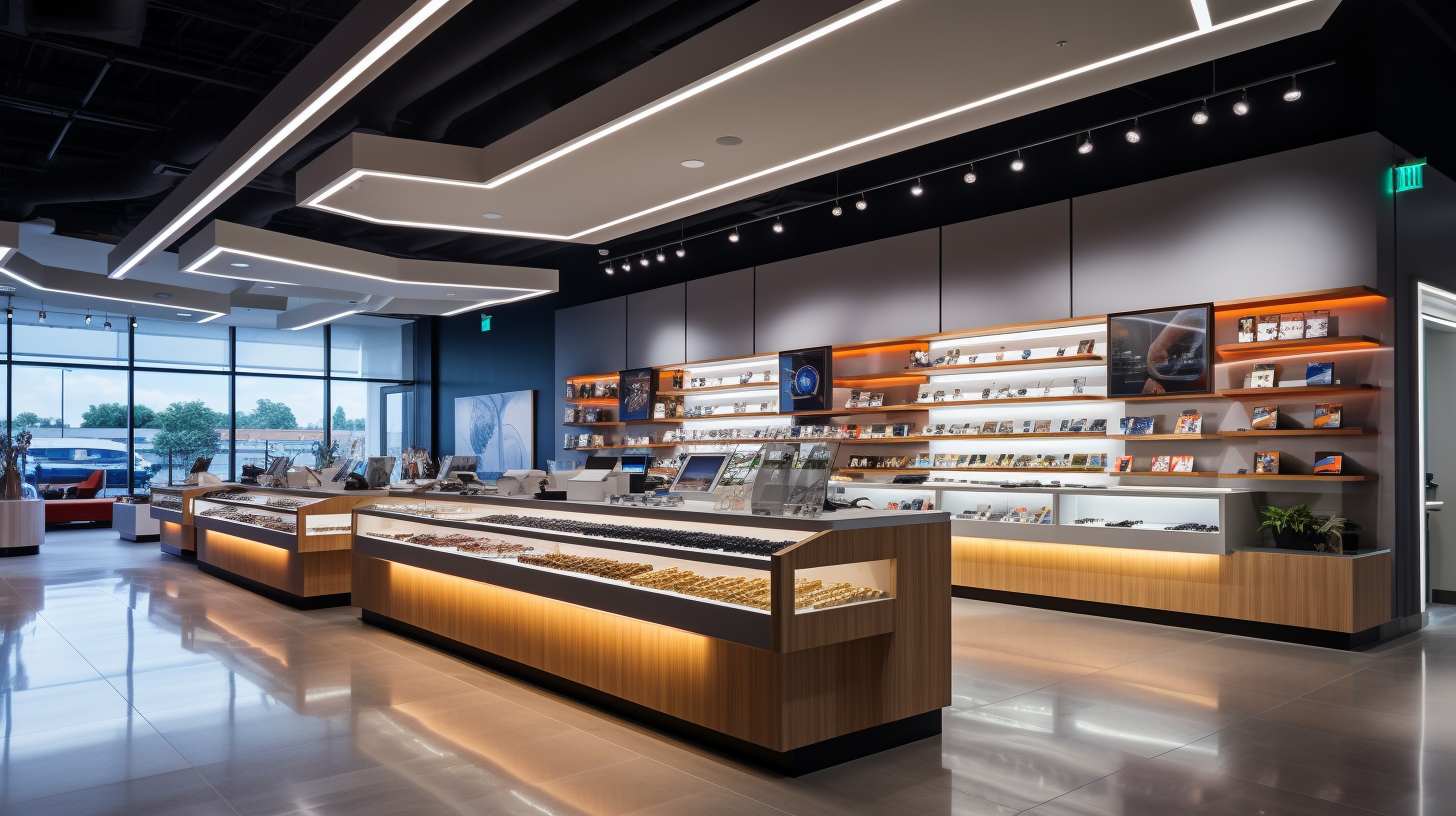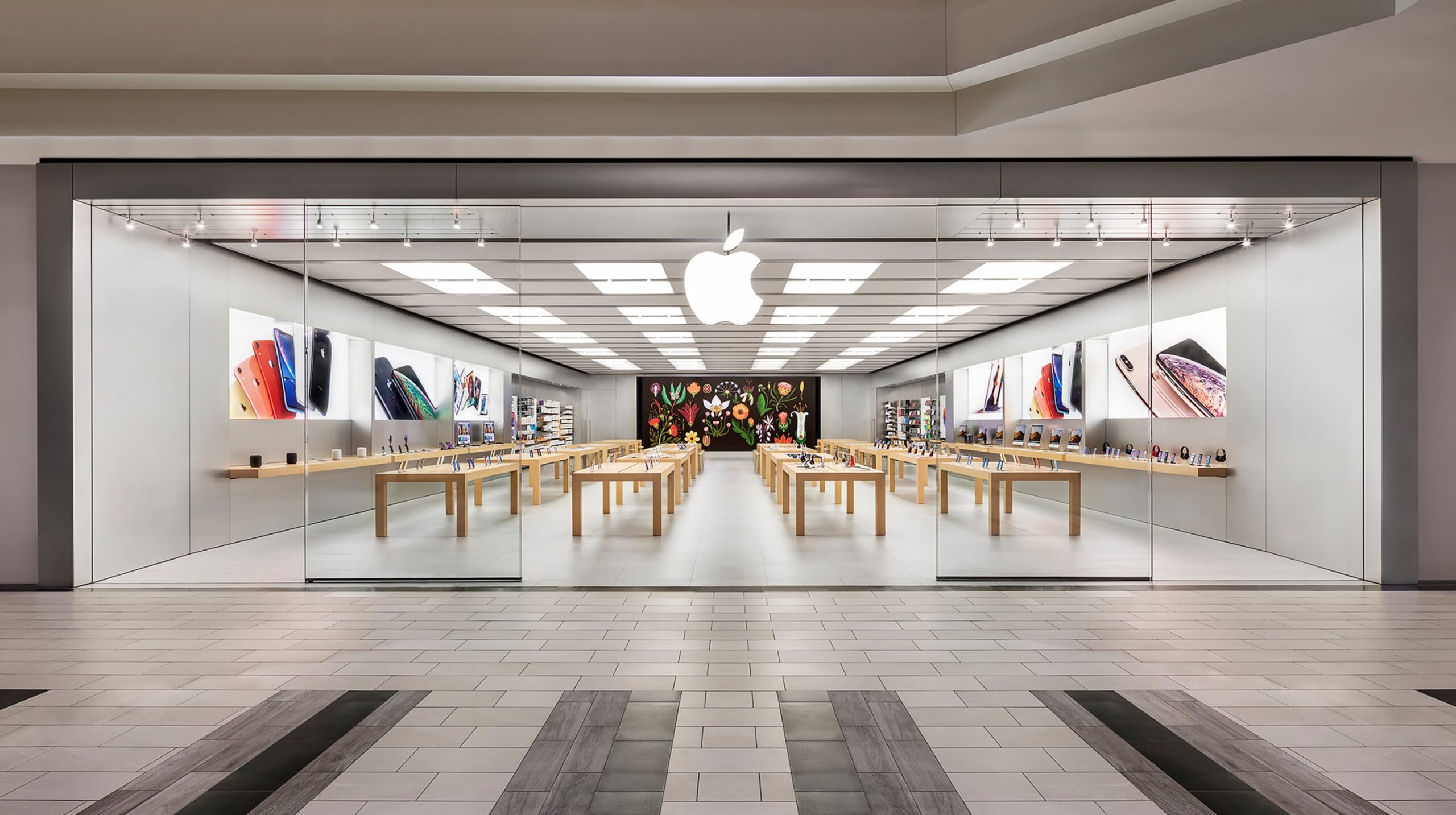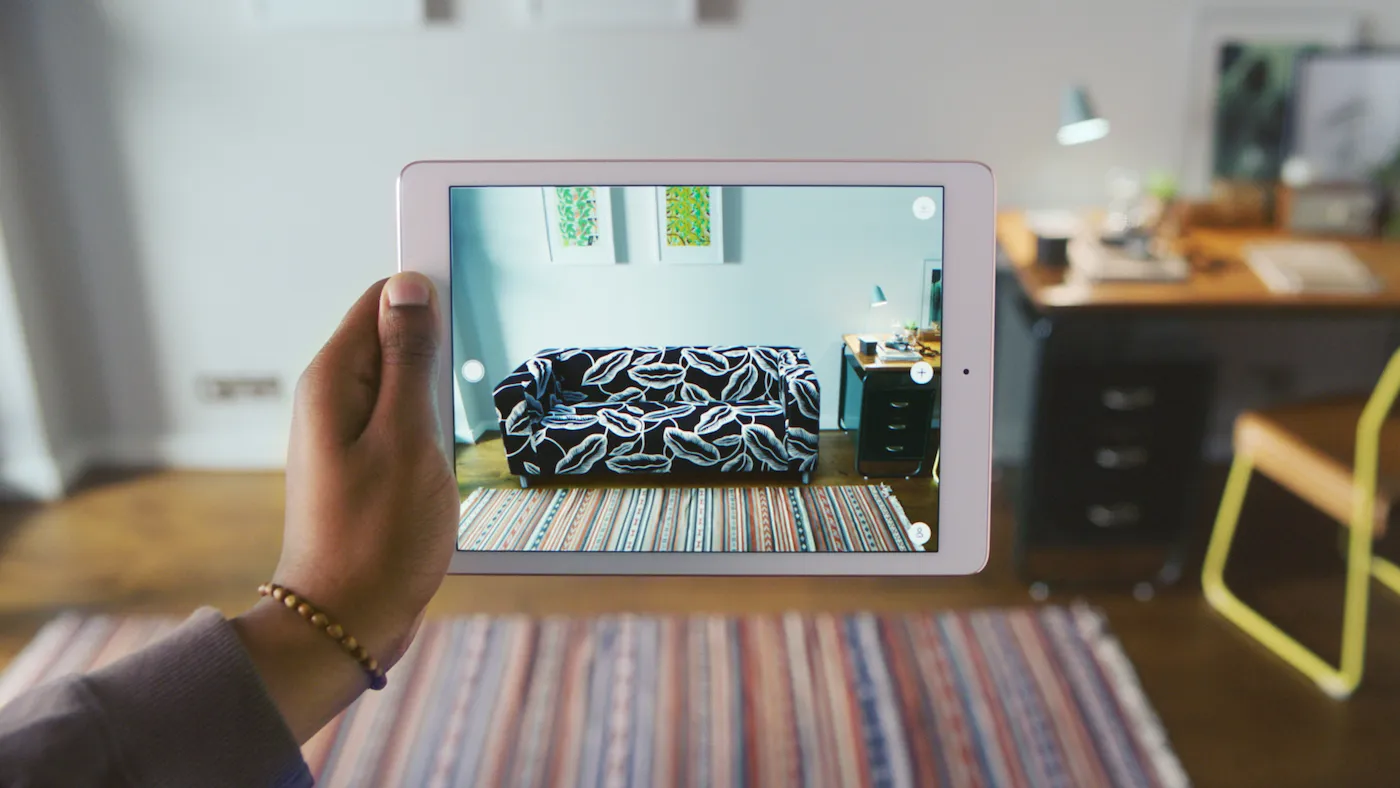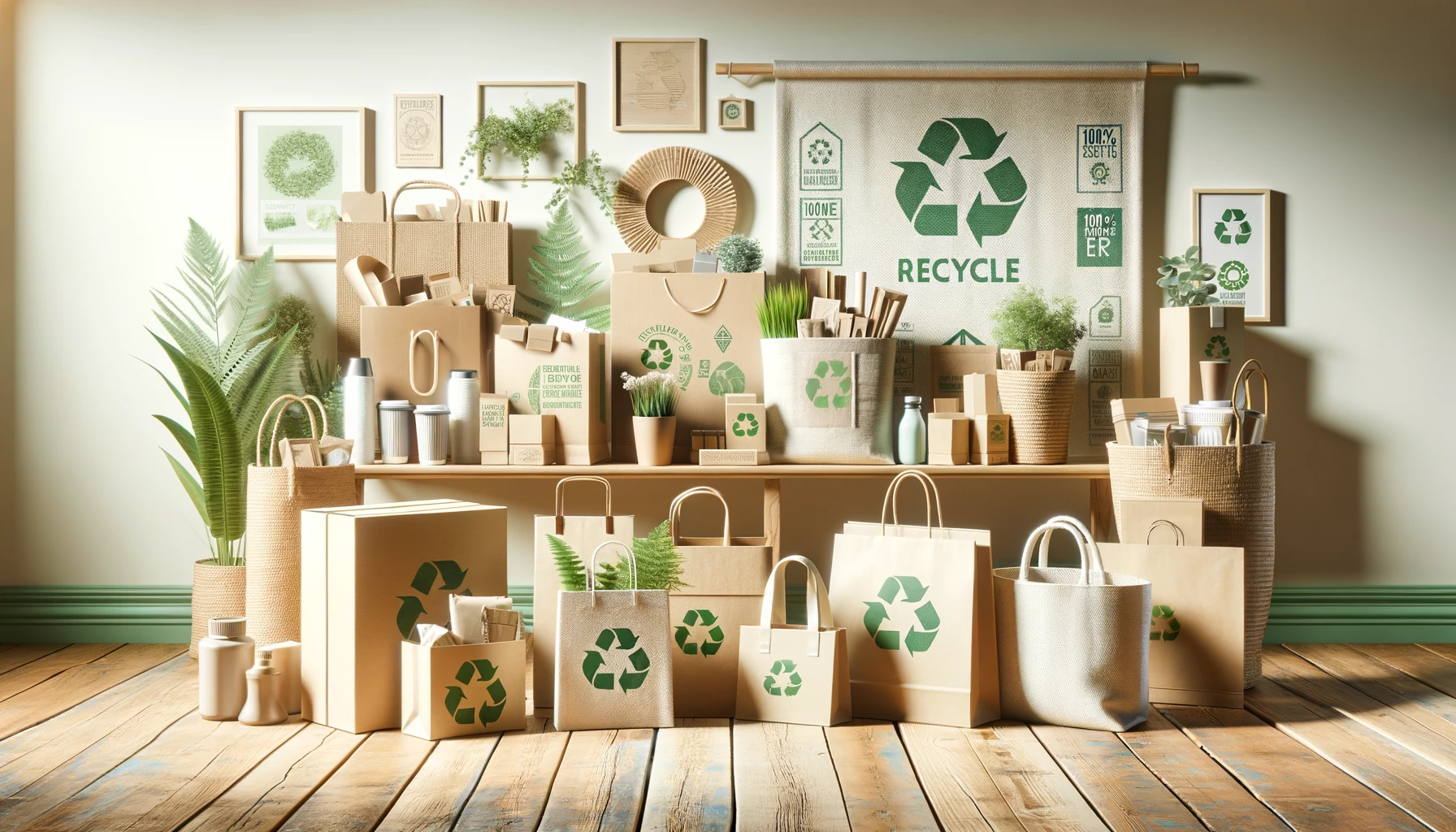During a time where digital storefronts are just a click away, the physical retail environment demands more than mere transactions. Physical retail spaces seek to tell a story, to create an experience that resonates with the customer long after they’ve left the store.
Imagine walking into a store where every aisle, every shelf, and every product tells a part of your favorite story. This isn’t about shopping; it’s about creating an experience for your customers. Through innovative store design and strategic retail layout, businesses can create meaningful spaces that speak volumes about their identity and values- spaces that customers what to return to.
Table of Contents
The Foundations of an Engaging Store Design
Creating a retail space that truly resonates with customers begins with a deep understanding of your brand identity and how it can be translated into a physical environment. In oder to create a good experience for your customers, you must understand your target audience and build out each part of your brand in a way that will appeal to that audience.
Understanding Your Brand Identity
The Role of Color, Texture, and Lighting
The visual aspects of your store play a pivotal role in conveying your brand’s personality and values. Colors evoke emotions; textures add depth and character; lighting sets the mood and highlights products. For instance, a luxury brand might use a palette of black and gold, rich velvet textures, and soft, focused lighting to create an ambiance of elegance and exclusivity.
In contrast, a brand promoting sustainability might opt for natural light, earthy colors, and reclaimed wood textures to emphasize its commitment to the environment. By thoughtfully choosing these elements, retailers can create an immersive backdrop that tells their brand’s story at a glance.

Layout Strategies That Guide and Engage
The layout of your store is not just about the physical arrangement of products; it’s about meticulously planning out a customer’s journey through your space. A well-designed layout guides customers seamlessly from one section to another, encouraging discovery while making it easy to find what they’re looking for.
- The Power of the Decompression Zone: This is the area immediately inside the entrance, where customers adjust to the new environment. It’s a prime spot for making a strong first impression. Use this space to showcase your brand’s identity and prime products, setting the tone for the rest of the shopping experience.
- Creating a Journey Through Product Stories: Arrange your products in a way that narrates your brand’s story. For example, a bookstore might create thematic sections that invite customers to explore different genres, with each section designed to reflect the essence of its theme, from adventurous travel to calm mindfulness.
Innovative Store Layouts That Tell a Story
The narrative power of your store’s layout can be amplified through innovative design choices that encourage customer interaction and engagement. This section highlights how integrating technology and interactive elements can transform the retail experience.
Brand Storytelling Through Design: Apple
Interactive Elements: Consider how Apple stores use open tables for product displays, allowing customers to touch, use, and experience products firsthand. This open layout encourages exploration and interaction, creating a narrative of innovation and user-friendliness.

Integrating Technology for a Seamless Experience
Augmented reality and virtual fittings: Retailers like Warby Parker and IKEA are pioneering the use of AR to enhance the customer experience. Through AR, customers can “try on” glasses or visualize how furniture might look in their home, merging digital storytelling with physical reality.

Measuring the Impact of Your Store Design
Understanding the influence of store design on customer behavior and sales is crucial for any retail business. Tracking data to measure the success of your retail layout and is essential to making changes to your store design that will help improve your business.
Sales, Foot Traffic, and Customer Feedback
Tools and Techniques for Data Collection
Advancements in technology have provided retailers with a variety of tools to track how store design affects sales, foot traffic, and overall customer satisfaction. Heat mapping tools, for example, can reveal which areas of the store receive the most attention, helping retailers understand where customers are drawn and where they linger.
Sales data, when correlated with layout changes, can indicate which design elements are enhancing the shopping experience and leading to conversions. Additionally, direct customer feedback, through surveys or in-store interactions, offers invaluable insights into how the design is perceived and its effect on the shopping experience.
Adjusting Your Layout Based on Insights
The data collected should not sit idle; it’s a goldmine of insights that can guide improvements to your store layout. For instance, if heat maps show that a particular section of the store is frequently bypassed, it may be time to rethink its placement or how it’s highlighted within the space.
Similarly, customer feedback about difficulty navigating the store or suggestions for improvement can lead to significant enhancements in layout and design. A/B testing in physical spaces—altering one element of the layout while keeping everything else constant—can provide concrete evidence of what changes lead to better outcomes, allowing retailers to continually refine their approach for maximum impact.
Future Trends in Retail Design and Layout
It’s clear that the retail landscape is rapidly evolving, with sustainability, technology, and a combination of digital and physical experiences leading the way. It’s important to understand these upcoming trends so you can keep your business relevant to your customers and continue to compete with other companies in the same industry.
Sustainable and Eco-friendly Designs
The Rise of Green Spaces in Retail Environments
Sustainability is no longer a niche preference but a global movement, and retail design is responding. More retailers are integrating natural elements and green spaces into their stores, not only to reduce their environmental footprint but also to enhance the customer experience.
Plants, natural lighting, and eco-friendly packaging materials are becoming common features. Customers want to shop from a store that is trying to make a difference in the world and these are features that prove to the customers your company if committed to doing just that.

The Blending of Digital and Physical Spaces
How Omnichannel Approaches are Shaping Store Layouts
The distinction between online and offline shopping is becoming increasingly blurred. Retailers are embracing omnichannel strategies, integrating digital elements into physical stores to create a seamless experience.
Interactive screens that provide product information, in-store navigation apps, and the ability to check online stock while in-store are just a few examples of how digital and physical realms are converging to enhance customer engagement and convenience.
In the evolving landscape of retail, store design and layout has a profound impact on creating an unforgettable customer experience. As we’ve seen, the essence of retail is no longer confined to transactions; it’s about creating a story about your brand and an environment that speaks to the heart of the customer.
The integration of brand identity into every color, texture, and light; the strategic layout that guides and engages; the innovative use of technology to blur the lines between digital and physical platforms—all these elements come together to create not just a store, but a memorable experience. A place where customers don’t just shop but connect, experience, remember, and return.
As retail continues to evolve, the forward-thinking approaches discussed—sustainability, the integration of digital elements, and the commitment to an omnichannel experience—will become not just trends but standards. The future of retail design lies in its ability to adapt, to innovate, and most importantly, to tell a story that resonates.
We invite you, the retailers and brand storytellers, to embrace these insights and innovations. Experiment with your spaces, listen to your customers, and continually refine your approach. Set up a call with us to consult regarding new ideas for your retail spaces and ways to mesh your physical and online spaces for optimal customer experience. The ultimate goal is to create not just a store but a community, a place where customers feel at home and where every visit is a new chapter in their story with your brand.
FAQ
1. How can small retailers compete with larger chains in terms of store design?
Small retailers have the advantage of flexibility and the ability to create a unique, personal shopping experience. Focus on what makes your brand unique and use your store design to highlight these elements. Personal touches, exceptional customer service, and community involvement can all make a significant impact.
2. Is it costly to implement an effective retail layout?
Not necessarily. While budget certainly plays a role in renovations and technology integrations, many effective layout changes can be made with minimal cost. The key is to be strategic and thoughtful about how changes will affect the customer experience.
3. How often should I update my store layout?
While there’s no set rule, it’s wise to review your layout and design periodically, especially in response to significant shifts in customer behavior or feedback. Seasonal updates can also keep the store feeling fresh and engaging.
4. Can technology replace the need for a well-designed physical store?
Technology enhances the physical store experience but cannot replace the need for thoughtful design. The best retail spaces will integrate technology in a way that complements the physical design, creating a seamless blend of digital and physical shopping.
5. How can I measure the ROI of a redesigned store layout?
Look beyond just sales figures. Measure foot traffic, customer dwell time, engagement rates with specific displays, and customer feedback before and after the redesign. These metrics can provide a more nuanced view of how design changes impact your business.
